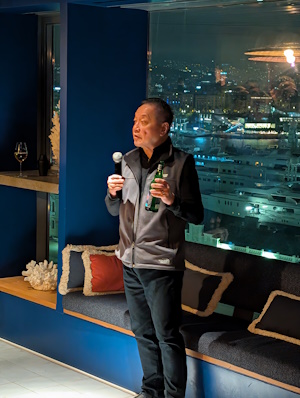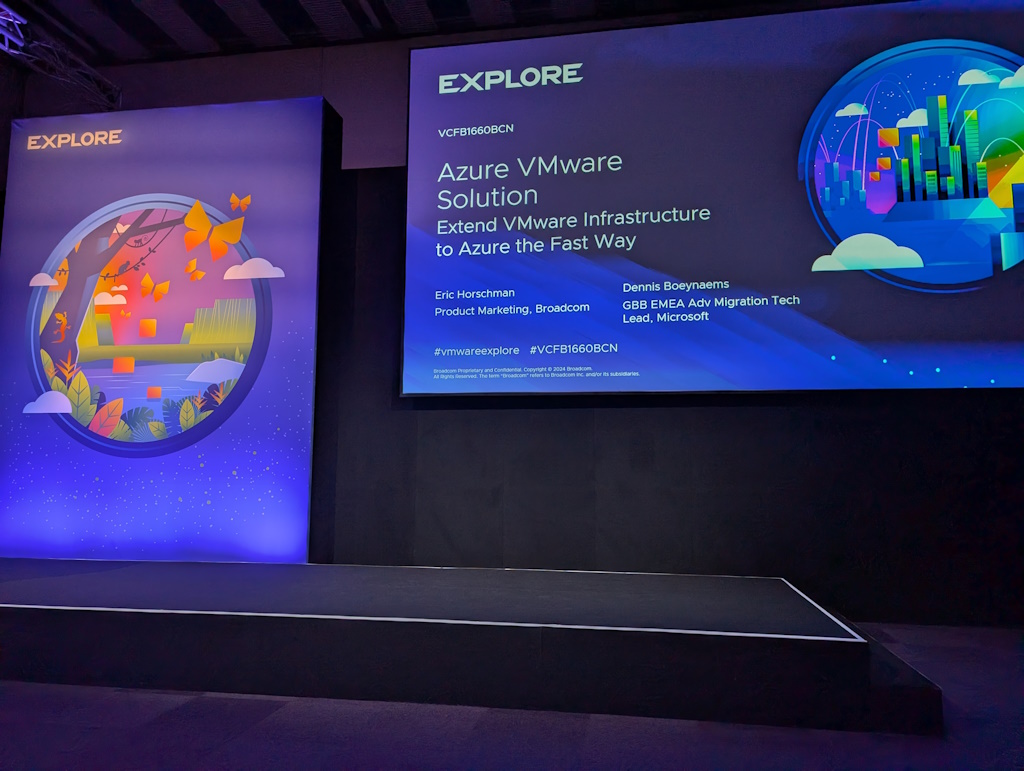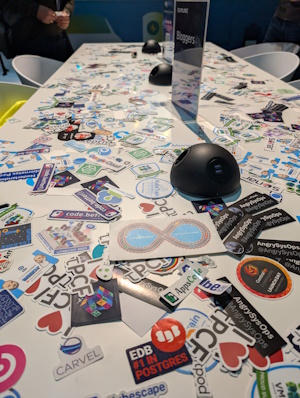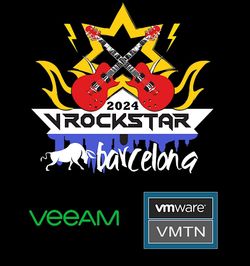VMware Explore 2024 Day 1

In this post I’ll pick up on some of the highlights of the first day of the event.
But first, on Sunday evening I was privileged to be invited to the VMware Community Leadership Reception, hosted in the
AZUL Rooftop restaurant in Barceloneta. All the VMUG leaders and vExpert’s in the audience were greeted by Broadcom
CEO Hok Tan - it was interesting to hear from him in a more informal setting than on the conference stage, and great
to hear of his support for the vCommunity.

The event schedule for Explore has shifted around since previous years, with Monday through Wednesday being the full-on conference days, plus a half-day of extra sessions and labs on the Thursday. This means Monday was a bright and early start, traveling across the city in the rain for the first sessions at 9am.
At the top of this article I referred to Explore a “virtualisation conference”, but it really is much more. This reflects how VMware, even before the acquisition by Broadcom, have matured into something much greater. Virtualisation is still at the heart of the technology, but the surrounding management, automation, security, and connectivity which are now rolled in make it much more fitting of the “cloud” moniker. My sessions and conversations today reflected that growth.
Monday Sessions
Azure VMware Solution- Extend VMware Infrastructure to Azure the easy way.
#VCFB1660BCN Eric Horschman (Broadcom) and Dennis Boeynaems (Microsoft)

Running on dedicated bare-metal hardware in the Azure datacentres, AVS is now available in 33 Azure regions. This is good news if you have sovereignty or other location requirements but also opens up the options for global reach- if you want a vSphere environment on the other side of the planet to service foreign customers you can.
VMware’s HCX toolset is included in AVS and provides several options for migrations with the cold move and vMotion options that vSphere admins of old are well aquainted with coupled with minimal-downtime bulk migration and OS-assisted migration for converting Hyper-V and KVM VMs into AVS.
AVS has traditionally been a product that you buy from Microsoft, with no spending direct with Broadcom, but a new announcement of
VMware Cloud Foundation (VCF) license portability brings a new option into play. With this “Bring Your Own License” (BYOL)
route, you buy a VCF license through your usual Broadcom supplier and then couple this with a suitably discounted AVS environment from Microsoft.
This is good news if you are doing a datacentre exit and have existing VCF subscriptions you want to leverage until they expire, at which
point you can switch to the regular AVS payment model. The BYOL route also gives you access to the full Cloud Foundation suite, so you can
make use of the operations and automation tools formerly know as Aria/ vRealize (spoiler alert- Aria is getting rebranded).

From Migration to Innovation: How Azure VMware Solution Unlocks Azure with API
VCFT1599BCNS Dennis Boeynaems (Microsoft) and Juan Manuel Rey (Microsoft)
My second session was also on AVS, and whilst there was some overlap with the preceding talk, this delved a bit deeper into some of the features that encourage App Modernisation. Bringing your VMware workloads adjacent (sub-ms latency) to Azure PaaS services enables traditionally hosted databases to be moved to the managed database solutions for example.
The session picked up on the extra resilience the cloud solution brings. It’s very difficult and expensive to match the infrastructure that multiple Azure availability zones can provide. An Availability Zone being a set of one or more datacentres, and many Azure geographical regions have several Zones. This resilience is matched by scalability and velocity, it takes about 4 hours for the initial creation of a AVS SDDC, and from the walk-through in the session this seemed remarkably straightforward. The presenters claimed that a prepared admin could go from nothing to delivering the first migration using the included HCX Enterprise tool in a day.
This infrastructure can then leverage the scalability of the public cloud. Once in place additional nodes can be spun up in as little as 15 minutes. Again, that’s hard to match in an on-premises environment with associated purchasing and delivery timelines.
When shifting to a managed service such as this the existing admins lose some of their controls. This is to be expected as the vendor, in this case Microsoft, is taking over the running of some of these components. This can present issues as there are some tasks in vSphere which need a top-level admin account to run. The “cloudadmin” role provided to AVS customers is not sufficient, but Azure provides a workaround using it’s “Run Command” feature. This enables RBAC controlled admins to perform certain advanced tasks, such as setting up an LDAP Identity Service, direct from the Azure Portal rather than in vCenter as would be the norm in an on-premises environment.
Communities Zone

The “vCommunity” - folks from those tech community groups like VMUG, vExpert, Broadcom Champions, and so on that surround the VMware ecosystem are one of the things I always look forward to at these events. There’s an opportunity to meet old acquaintances, and make new ones as everyone is always very welcoming. This is where a lot of the value-add comes from in tech conferences, you have fellow practitioners alongside many of the session presenters and the experts who write, build, deliver, and sell the products you work with. If you have a question about how to do something in product X, you might find someone who knows- or even the person who wrote the code!
Solutions Exchange
In amongst the sessions, I took the opportunity to explore the solutions exchange. Often the busiest section of the show, this was packed with VMware partner vendors, and I had some interesting discussions on what was new in their respective product lines. Thanks in particular to Vil from Rubrik who gave me an in-depth demo of their data protection and Data Security Posture Management products, and Tom from 10Zig who talked through their latest thin/zero client offerings- including a RepurpOS USB thin client.
vRockstar
